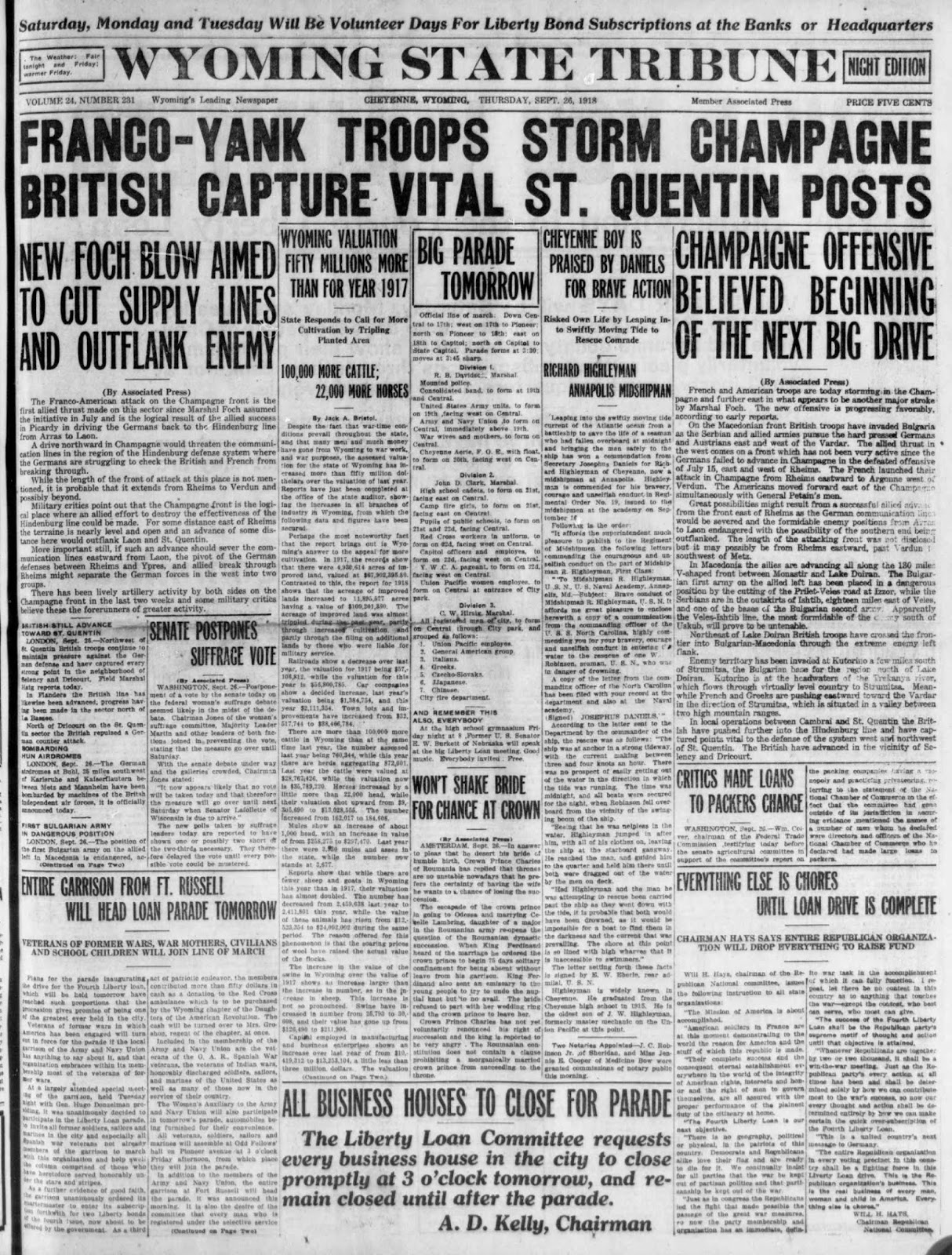Camp Funston, Kansas, which some believe if the locus of the origin of the Spanish Flu.
1. The Battle of Courtrai commences in which the Groupe d'Armees des Flanders, made up of twelve Belgian, ten British and six French divisions under the command of King Albert I of Belgian attacked German forces in the hopes of continuing the Allied advance as far as possible before the oncoming winter made further advances impossible. It was still anticiapted at the time that the war would drag into 1919.
British forces found, to their expectation, that the Germans offered much reduced resistance and they had achived all of their objectives, reaching the Scheldt, by the 22nd.
The Germans were basically collapsing while still offering resistance. The nearness to a complete German disaster was not apparent, but it was coming.
2. The U.S. resumes the offensive in the Meuse Argonne with assaults near Montfaucon.
Senencourt (Muese) France. "Kamerad," a figure by the soldiers in the yard of the American Red Cross Canteen at Senencourt. The Red Cross girls are, from left to right: Miss Louise Adams of 10 Arlington Place, Brooklyn, N.Y.; Miss Alice Birdall, of 310 Third Ave. Reselle Ave., N.J.; and Miss Gertrude Nichols, #849 West Galen Street, Butte, Montana; Capt. Beverly Rautoul of #17 Winter Street, Salem, Mass., and Private Geo. St. Clair Preston, both of the American Red Cross Evacuation Hospital #8, are on the extreme left
3. The air wing of the United States Marine Corps engaged in its first all Marine air action by bombing Pitthem, Belgium. Marines Ralph Talbot and gunner Robert Guy Robinson won the Medal of Honor for heroism associated with holding off German air attacks on their Airco bomber when they became separated and had to return to attempt to return to their base alone.
Airco DH4, which was used in the tactical role.
4. The provisional government for Czechoslovakia formed.
5. The U-139 attacked the Portoguese steamer Sao Miguel and its escort the Portuguese Navy trawler NRP Augusto de Castilho on the Action of 14 October 1918. The trawler was lightly armed and while it fought for several hours, it was actually outgunned by the submarine and surrendered to it, and was thereafter scuttled by the German submariners. The engagement is regarded as the only high seas naval battle of the Great War to take place in the North Atlantic.
On the same day, German submarines sank the Bayard, a French fishing vessel, the Stifinder, a Norwegian barque, which was scuttled due an engagement with the U-152 and the British passenger ship Dundalk, with the loss of 21 lives. The German minsweeper SMS M22 was sunk by mines.
6.

















































